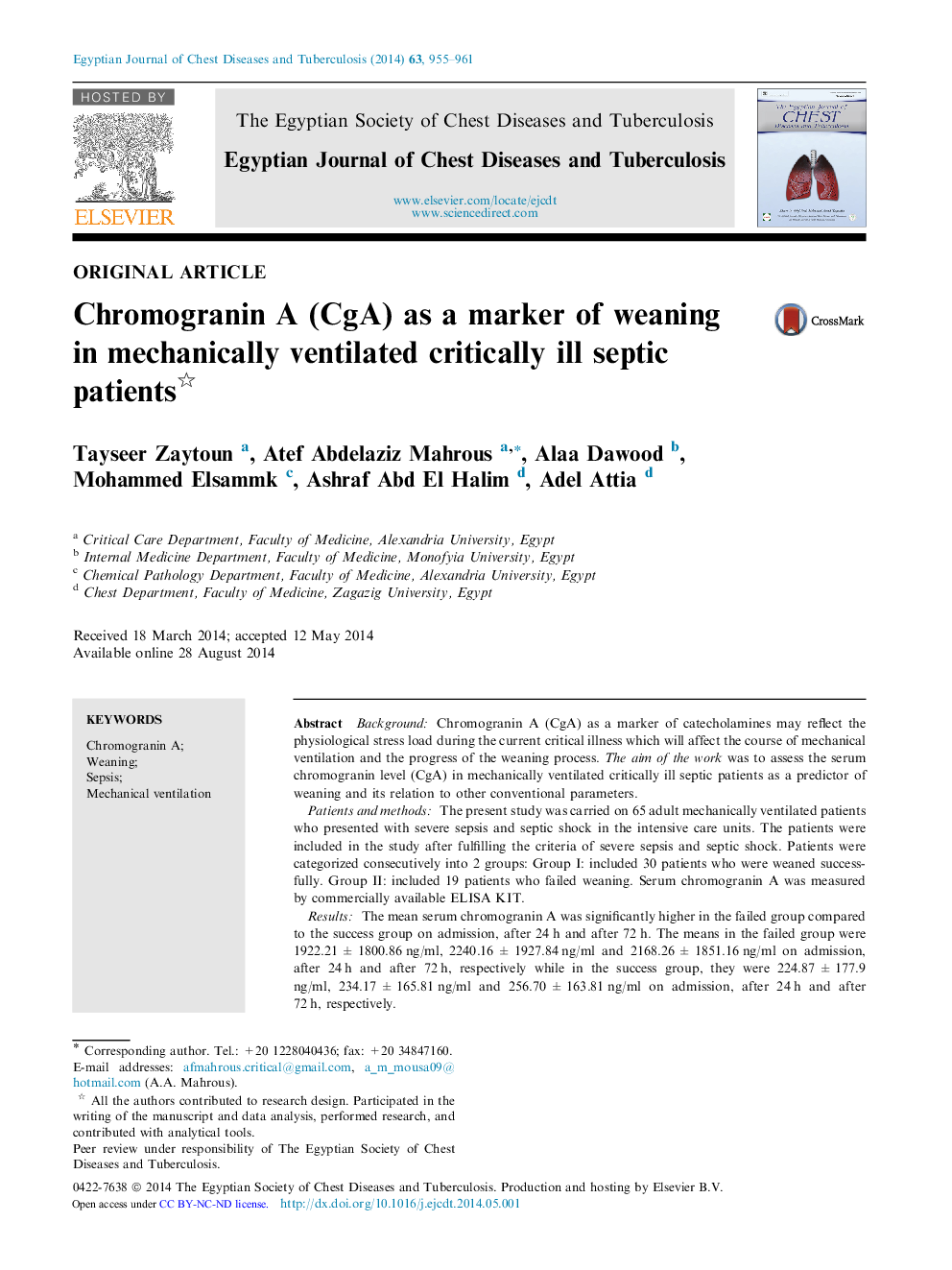| Article ID | Journal | Published Year | Pages | File Type |
|---|---|---|---|---|
| 3400235 | Egyptian Journal of Chest Diseases and Tuberculosis | 2014 | 7 Pages |
BackgroundChromogranin A (CgA) as a marker of catecholamines may reflect the physiological stress load during the current critical illness which will affect the course of mechanical ventilation and the progress of the weaning process. The aim of the work was to assess the serum chromogranin level (CgA) in mechanically ventilated critically ill septic patients as a predictor of weaning and its relation to other conventional parameters.Patients and methodsThe present study was carried on 65 adult mechanically ventilated patients who presented with severe sepsis and septic shock in the intensive care units. The patients were included in the study after fulfilling the criteria of severe sepsis and septic shock. Patients were categorized consecutively into 2 groups: Group I: included 30 patients who were weaned successfully. Group II: included 19 patients who failed weaning. Serum chromogranin A was measured by commercially available ELISA KIT.ResultsThe mean serum chromogranin A was significantly higher in the failed group compared to the success group on admission, after 24 h and after 72 h. The means in the failed group were 1922.21 ± 1800.86 ng/ml, 2240.16 ± 1927.84 ng/ml and 2168.26 ± 1851.16 ng/ml on admission, after 24 h and after 72 h, respectively while in the success group, they were 224.87 ± 177.9 ng/ml, 234.17 ± 165.81 ng/ml and 256.70 ± 163.81 ng/ml on admission, after 24 h and after 72 h, respectively.ConclusionThe serum chromogranin A can be used as a predictor of the weaning in septic mechanically ventilated patients.
